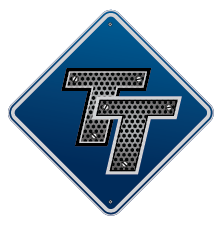Inward Facing Cameras & AI
Topic 34072 | Page 4
They started the pilot program a year ago. In May they started adding more trucks. They said then it would take 18 months to put in all trucks. Last month they announced that Omintracs and NavGo are separating, therefore all trucks will have the cameras and new GeoTab ELDs by the end of this year.
The gamification term is not very welcome as people don't see safety as a game.
The gamification term is not very welcome as people don't see safety as a game.
When you say they don't see safety as a game, I know you mean they take it safety seriously. I think everyone does. Turning it into a type of video game is meant to make it more appealing and engaging, based on the natural human tendency to want to know where you stand in a group.
In the end, it's a driver monitoring system no matter how you decorate it. Unfortunately, most of the technology they're using in hopes of making people safer drivers is rather limited. I'm sure some of it helps newer drivers, and some may be helpful to more experienced drivers, but much of it is either unhelpful or even potentially dangerous.
IMO they went about deploying them wrong. Had they put them in the training trucks first and basically said "These cameras will babysit your students so you can sleep" then 60% of the fleet would have been more willing to get them. They would have seen the cameras aren't that bad. They could have said "you cannot upgrade until you get X score for X amount of time". They could have said "they are going in trucks of new drivers for X months until they improve".
Instead we were told "no, we arent getting video recording cameras". 2 weeks later they started testing them. 10 months later they said they are coming, like it or not. If you want to leave, fine.
In addition, prime is paying for cameras for all existing lease contracts. Any new truck, the lease op will be paying for it. So at one of the worst times in trucking history where some of these people are making very very little... they want to make them pay for something they really dont want.
They should have done this when freight was threw the roof and no one would have cared due to the $ we were making.
Most other companies are getting them. Hirsbach who already had inward for awhile are now getting the AI cameras also.
Ultimately our job as an instructor is teach the students to be their own sensors, to interpret what they are feeling and adjust accordingly. Always though, a qualified instructor that can recognize all those factors above and has a talent for identifying how you need to move is required periodically.
There is a human element, a hunch, a gut level institution that needs to be developed, and honed over time. That is what makes a high performing individual. No computer can replicate it.
Absolutely.
The key to the sensors with skiing is that it allows you to feel the difference between making a technically excellent turn versus a sloppy turn. Once you know which elements you need to work on and learn what it feels like to make a precise turn, you can learn to "become your own sensor."
An endurance athlete can do that with their heart rate. I always used a heart rate monitor for all of my endurance training. I always monitored it closely. After a while, I knew what it felt like to be in the right zone. But without the accuracy of the heart rate monitor telling me exactly where I stood at all times in the beginning, there would be no way to learn what it feels like to be in the right zone. You can't become your own sensor until you know the feeling you're trying to replicate.
The sensors are also incredibly accurate. They can sense if you have a small variance in your angles or weight distribution. Most importantly, they help you develop consistency from turn to turn.
Often when we're learning something we're making different mistakes each time. My first turn I didn't have enough weight on the outside edge. My second turn I entered the turn too late. The third turn my weight was too far on my heels. The sensors give you real-time feedback in each turn, so you know what it feels like each time you do a certain thing the wrong way. Then, when you nail a turn with precision, you learn how that feels as well.
Josh Allen, the Buffalo Bills quarterback, was highly inaccurate throughout his college and early pro career. After his 2nd or 3rd season, they put him with a new coach who completely changed his technique. The improvement was dramatic. From that point on he was far more accurate.
You wouldn't think a guy could get a $150 million contract as a professional without knowing how to throw a football properly, but he did.
There's plenty of opportunity for both technology and humans to contribute to a person's development. Both have their strengths and weaknesses.
What I find interesting is that experienced truck drivers always feel like they know what they need to know and no further instruction is necessary. Yet, when you look at high performers in most areas of life, the higher up you go the more coaching you receive.
In football you might have two coaches for your little league team, three coaches for junior varsity, five coaches for varsity, twenty coaches in college, and forty coaches in the NFL. You would think a person would need less coaching as they got better at something, yet the opposite is true. The greater you want to perform, the more coaching and practice it takes.
The same is true in business. Examine the lives of the people at higher levels and they tend to have more coaches, counselors, courses, and advisors than people at lower levels.
In trucking, how many experienced drivers are eager to pursue more coaching? How many want to see how accurately they can make a turn, back up, or predict the movement of drivers ahead? What if the safety department offered free, voluntary training for experienced drivers? How many drivers would show up to see if they can improve? I'd be curious to see.
HOS:
Hours Of Service
HOS refers to the logbook hours of service regulations.OWI:
Operating While Intoxicated
Had they put them in the training trucks first and basically said "These cameras will babysit your students so you can sleep" then 60% of the fleet would have been more willing to get them. They would have seen the cameras aren't that bad.
That would be an excellent way to introduce cameras to the fleet.
Most other companies are getting them. Hirsbach who already had inward for awhile are now getting the AI cameras also.
I think every major carrier will have them before long. Right now it's a tug of war between the safety improvements you get with cameras versus the money you lose in recruiting because people are against them. As the cameras become more commonplace, the hysteria against them will go away.
I remember everyone said the world would end when they implemented electronic logbooks. Every driver was going to quit because they couldn't make a living, no new drivers would come into the industry, the economy would collapse, and the government would be forced to rescind the rule.
Well, what actually happened was nothing. People switched, life went on.
The experience with cameras will come down to how strictly they're enforced by each company. Companies will have to determine where that tipping point is where drivers won't tolerate a certain level of intrusion. It's one thing to tell a driver he's drifted onto the shoulder, but quite another to tell him he's one inch to the left of center in his lane.
Trying to be helpful can become a dangerous distraction if implemented the wrong way or at the wrong time.
Logbook:
A written or electronic record of a driver's duty status which must be maintained at all times. The driver records the amount of time spent driving, on-duty not driving, in the sleeper berth, or off duty. The enforcement of the Hours Of Service Rules (HOS) are based upon the entries put in a driver's logbook.

Swift got rid of inward facing cameras. Haven't heard any rumblings that Schneider is considering them. If they were so great these giants with tons of students/new drivers would have had them day 1? Outward facing cameras and critical events work great. I doubt someone who gets 0 or 1 critical events a year is a bad driver.
Great you want an inward facing camera to see I don't use my phone and wearing my seatbelt.
That's not enough now we need AI to tell us when we look out the side window to see something for to long. Tattle on us when we hold that cigarette a bit to long . We yawn after driving 9 hours, etc.
I agree all those things is up to the carrier and they can tweak it. It's big brother and now they'll have something to hold against us when the need arises.
With all that said I'm going local with inward facing cameras. lol
Had they put them in the training trucks first and basically said "These cameras will babysit your students so you can sleep" then 60% of the fleet would have been more willing to get them. They would have seen the cameras aren't that bad.
That would be an excellent way to introduce cameras to the fleet.
Most other companies are getting them. Hirsbach who already had inward for awhile are now getting the AI cameras also.
I think every major carrier will have them before long. Right now it's a tug of war between the safety improvements you get with cameras versus the money you lose in recruiting because people are against them. As the cameras become more commonplace, the hysteria against them will go away.
I remember everyone said the world would end when they implemented electronic logbooks. Every driver was going to quit because they couldn't make a living, no new drivers would come into the industry, the economy would collapse, and the government would be forced to rescind the rule.
Well, what actually happened was nothing. People switched, life went on.
The experience with cameras will come down to how strictly they're enforced by each company. Companies will have to determine where that tipping point is where drivers won't tolerate a certain level of intrusion. It's one thing to tell a driver he's drifted onto the shoulder, but quite another to tell him he's one inch to the left of center in his lane.
Trying to be helpful can become a dangerous distraction if implemented the wrong way or at the wrong time.
Logbook:
A written or electronic record of a driver's duty status which must be maintained at all times. The driver records the amount of time spent driving, on-duty not driving, in the sleeper berth, or off duty. The enforcement of the Hours Of Service Rules (HOS) are based upon the entries put in a driver's logbook.
HOS:
Hours Of Service
HOS refers to the logbook hours of service regulations.One issue i have with them.... they tell you what you did... but not what you are not doing. For example, there is a list of "bad stuff" that will cause alerts.
For good stuff, there is no list. So imagine you have a driver who never moves over for emergency vehicles on the shoulder. Nothing prompts him to do this. When i did it, it added points. But unless you did it.. u do not know what will improve your score. There is only a list that will negatively impact your score. I get "stars" for increasing folowing distance and maintainong speed limits. But if you didnt do this..nothing educates you to do this.
As usual, companies are putting too much faith in technology and not enough concern on improving training.
OWI:
Operating While Intoxicated
Larry T. said 'tattle on us when we hold that cigarette a bit too long.' My company is banning smoking and vaping in all trucks starting Sept 2nd. I'm wondering if they can/will tweak the inward cameras to watch for that.
This thread makes me really grateful for the company I'm at. They still belive in the ability of the driver to operate their truck in a professional manner without the need to install nanny state equipment. We have no cameras of any sorts. I have my own outward facing installed. The companies philosophy is that they trust us to drive professionally thus why they are selective in who they hire.
The freedom to drive down the road in peace and quiet, and do my job is a priority for me at this point in my career and life. I'd have a hard time going back to work for a carrier that was implementing such constrictive policies and equipment. I'm grateful I had them as training tools when I began, but it would be intolerable to me now.
New Reply:
New! Check out our help videos for a better understanding of our forum features

















Preview:








 TT On Facebook
TT On Facebook
Interesting, there are some very big parallels, no pun intended, in regards to modifying your movement patterns in skiing via ai sensors as well as trucking.
Background, I was a PSIA certified ski instructor for over a decade. There is no substitute for movement analysis by a qualified instructor. The human element can not be removed.
Alpine skiing, while having certain movement patterns that are present from the beginning to advanced levels, which we call skills, can be summed into 4 distinct areas: Stance and Balance, rotary movements, edging and pressure movements. The blending of these movements are what differentiates "good" skiing, meaning efficient skiing from "bad" skiing.
So why then aren't the sensors good? Because it's a dynamic changing environment, the tactics and strategies that you use eventually must match the terrain, snow conditions, water content, temperature and the biggest of all, your instincts.
The skill bend for skiing eastern hard pack man made snow ( forward weight bias, almost no rotary movement and gentle pressure with progressive edge angle) is vastly different than the skill blend for skiing Pacific NW fresh snow, cascade concrete (rear weight bias, strong rotary movements and very little angles).
To add into the complex equation is the equipment peice, given side cut (the hourglass shap of the ski that allows it to cut into the snow), side cut radius. Flex patterns, binding system, boot rigid index, etc. These all effect drastically how you will ski, how your biomechanics will change.
Ultimately our job as an instructor is teach the students to be their own sensors, to interpret what they are feeling and adjust accordingly. Always though, a qualified instructor that can recognize all those factors above and has a talent for identifying how you need to move is required periodically.
So what does that have to do with trucking? At early levels, I agree, an ai based training system is useful. But ultimately the driver needs to develop instincts and skills to match the ever changing dynamic environment were in. There is a human element, a hunch, a gut level institution that needs to be developed, and honed over time. That is what makes a high performing individual. No computer can replicate it.
Our crash mitigation systems are a glaring example of engineers attempting to duplicate human instincts. They hard brake at random items because, according to the development at bendix wingman, the best they could ascertain was that human intuition is closest to a random algorithm. Obviously it isn't.
HOS:
Hours Of Service
HOS refers to the logbook hours of service regulations.